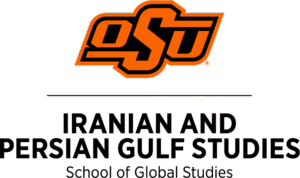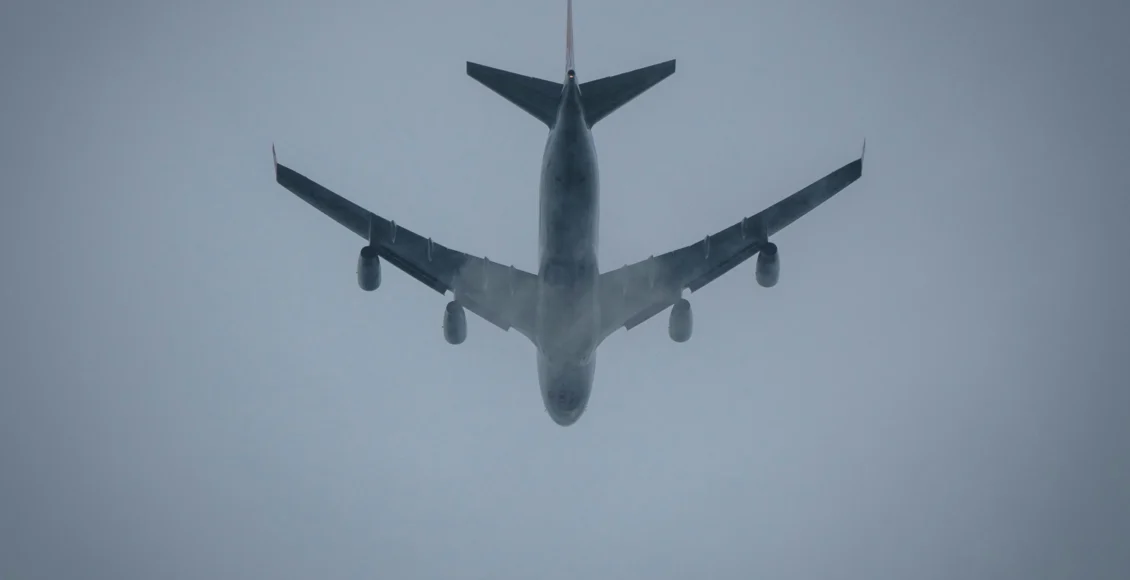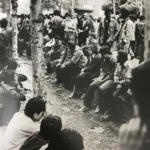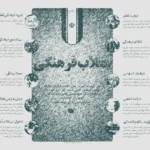 This issue of GlobIS Review aims to introduce some of the key themes and debates in both diaspora and migration studies in studies about Iran. The initiative was not possible without the support of the Iranian & Persian Gulf Studies (IPGS) program at Oklahoma State University. Dr. Amy Malek, a cultural anthropologist specializing in Iranian diaspora studies and outgoing director of IPGS , together with Dr. Amin Moghadam, research lead at CERC Migration at Toronto Metropolitan University, served as guest editors. Their insight and support have been instrumental to this effort.
This issue of GlobIS Review aims to introduce some of the key themes and debates in both diaspora and migration studies in studies about Iran. The initiative was not possible without the support of the Iranian & Persian Gulf Studies (IPGS) program at Oklahoma State University. Dr. Amy Malek, a cultural anthropologist specializing in Iranian diaspora studies and outgoing director of IPGS , together with Dr. Amin Moghadam, research lead at CERC Migration at Toronto Metropolitan University, served as guest editors. Their insight and support have been instrumental to this effort.
Migration and the Iranian Diaspora
/Editorial Note, vol 2, issue 1
Around the turn of the twentieth century, small yet diverse Iranian emigrant communities had established themselves primarily in neighboring regions. These included individuals who migrated for trade or employment—such as to India or the Caucasus—as well as elite families living in exile in cities like Beirut, and clerics or religious households who settled near sacred shrines. However, the 1979 Revolution and the subsequent Iran-Iraq War (1980–1988) marked a significant turning point, initiating a wave of mass emigration from Iran. While political opponents of the new regime, minoritized populations facing religious or ethnic persecution, and families fleeing the war were leaving Iran, the country simultaneously became a destination for refugees and immigrants from Afghanistan, where geopolitical upheavals had produced ongoing instability. The second major wave of post-revolutionary emigration was triggered by the collapse of the reform era, the suppression of the Green Movement in 2009, and deepening economic instabilities exacerbated by international sanctions. This wave, which continues to the present day, has significantly shaped the younger generation within Iranian diasporic communities in Europe and North America.
Initially focused on Iran’s history, cultural heritage, and political transformations—particularly over the past century—Iranian studies largely neglected the Iranian diaspora as a subject of inquiry during its early development. In the past two decades, however, the field has experienced a notable shift, with increasing scholarly attention to the diasporic condition, conceptualized as a mode of life distinct from exile and living in “ghorbat” [1](see the review by Arash Davari in this issue). Foundational work in this emerging area has emphasized the diaspora’s sustained transnational ties to Iran, the formation of hybrid identities and cultural practices, and shared concerns regarding representation and reception in host societies (see the interview with Amy Malek and Persis Karim). Iranian diaspora studies, which initially emerged to explore these very characteristics, have by now generated dozens of books and articles, scholarly exchanges, and cultural and artistic productions.
Migration studies in post-revolutionary Iran began to take shape only in the aftermath of the 2009 Green Movement, as scholars turned their attention to critically examining the surge in youth migration triggered by the movement’s collapse. In contrast to the wave of emigration during the 1980s—which, until then, had elicited little to no scholarly engagement within Iran—the post-2009 exodus received heightened attention, particularly from reformist scholars. Employing analytical frameworks such as “brain drain,” “protest migration,” and “migration driven by a sense of futurelessness,” these scholars sought to situate this emerging trend within the broader context of Iran’s sociopolitical transformations. The attraction of “diasporic elites”—defined as individuals possessing high financial or professional capital—emerged as an explicit policy objective of the Iranian government, preceding even the JCPOA (Joint Comprehensive Plan of Action) negotiations. The establishment of the National Elites Foundation (Bonyad-e Nokhbegan) in 2005 signals the significance of this agenda for the conservative government then in office. Under the Rouhani administration (2013–2021), this agenda was further supported by the creation of the Iran Migration Observatory at Sharif University of Technology in 2017 (see the interview with Dr. Salavati in this issue).
Bringing these two bodies of scholarship—Iranian diaspora studies and migration studies in Iran—into dialogue within a single issue of GlobIS Review has been a challenging endeavor, the outcomes of which remain open to evaluation. While it may appear that scholars studying Iranian migrants at different stages of the migratory trajectory are linked by a shared focus on the same migratory subjects, in practice, each tends to concentrate on a specific phase of the migrant experience, shaped by distinct social and geographical contexts. As a result, within diaspora studies, the migrant’s past is often framed as a study of nostalgia and inherited legacies, while in migration studies in Iran, the future of prospective migrants is primarily narrated through the perspectives of returnees. Some scholars have conceptualized migration as a diasporic condition—a mode of being shaped by anticipation, subjective dislocation, and imagined elsewhere(s). Yet, significant barriers continue to hinder meaningful engagement between migration and diaspora studies; as such, initiating dialogue between these fields requires visionary thinking.
This issue of GlobIS Review aims to introduce some of the key themes and debates in both diaspora and migration studies in studies about Iran. The section on “Iranian Studies in the World” includes six reviews each engaging with a central question in the literature. This includes Arash Davari’s review of “This Flame Within” by Manijeh Moradian and “When Skateboards Will Be Free” by Saïd Sayrafiezadeh, which offer differing perspectives on the legacy of the 1979 revolution among families of leftist exiles. Davari interprets these works through the lens of contemporary political divisions within the Iranian diaspora, particularly in light of exclusionary dynamics emerging during the Woman, Life, Freedom movement. His analysis draws parallels with ideological rifts within the Iranian student movement of the 1970s.
Neda Maghbouleh’s “The Limits of Whiteness” examines how Iranian American youth experience race as a defining force during their U.S. schooling. In her review, Mitra Rastegar commends Maghbouleh for capturing a generational crisis sparked by encounters with racism and U.S. racial politics—challenging inherited notions of whiteness common among Iranian families. The book highlights how this crisis deepened following the 1979 U.S. Embassy takeover and later expanded to Middle Eastern communities after September 11.
Amy Malek’s review of Farzaneh Hemmasi’s ethnographic study “Tehrangeles Dreaming” highlights the book’s achievements in analyzing how the music produced in Tehrangeles reconfigures the intersections of culture, media, and geography. According to Malek, Hemmasi’s work reveals how diasporic cultural production allows Iranians to imagine new forms of identity and belonging that transcend state and territorial boundaries.
Sahar Razavi reviews the edited volume “The Iranian Diaspora” by Mohsen Mobasher, which explores the emergence of a distinct diasporic Iranian identity. The contributors argue that this identity is shaped through the blending of diverse Iranian subjectivities and selective incorporation of cultural elements from host societies. By nature, this identity remains fluid and continuously evolving.
Nima Naghibi’s “Women Write Iran” examines the works of Iranian women in the diaspora—including memoirs, prison narratives, fiction, and documentary film—featuring figures such as Marjane Satrapi, Shahrzad Mojab, and Nahid Persson. In her review, Leila Mayaree Pasargadi describes the book as a compelling exploration of nostalgia and its role in shaping diasporic authors’ understandings of both past and present.
Shahram Khosravi’s “Illegal Traveller” is an auto-ethnography, blending personal narrative with the experiences of other migrants to examine concepts such as invisible borders, statelessness, and border transgression. In her review, Christina Oelgemöller engages critically with Khosravi’s analysis of nationalist migration regimes and the notion of “conditional hospitality”—a system that selectively extends rights and recognition only to so-called “useful migrants.”
The section on Social Science in Iran includes two reviews covering several books published in Persian on the subject. Leila Araghi reviews “Longing to Leave” by Mehrdad Arabestani, which explores the perception of migration and its destinations as an intersubjective imaginary among university students in Tehran. He argues that the belief in foreign societies as inherently more rational, free, and livable—coupled with a desire to identify with global culture—constructs an absolute binary in which “here” signifies deprivation and “there” represents liberation.
Omid Asayesh examines the non-academic genre of migration literature in Iran, primarily authored by return migrants. He suggests that these works—often in the form of autobiographies, novels, or travelogues offers a distinct lens for analyzing migration—immersing the reader in the inner world and emotions of migrants, offering reflective and critical accounts of personal encounters with migration and migrant communities, and providing grounded, field-based insights into the lived realities of migration from the interviewees’ perspectives.
This issue features two summaries of recent doctoral dissertations in migration studies: Mina Azizi’s 2024 dissertation at Allameh Tabataba’i University in Tehran and Omid Asayesh’s 2024 dissertation at the University of Calgary. Azizi’s research challenges dominant narratives that frame Iranian youth migration solely as an act of despair. Her work opens space to explore the diversity of youth experiences and the various forms of agency exercised in relation to migration. Asayesh’s study introduces the concept of Homo Emigraturus—individuals who live in a constant state of anticipation for migration, often without ever finding a real opportunity to leave. He examines the culture of migration in Iran and its effects on unprepared departures, difficult settlement experiences, and the social stigma of “failure” associated with return migration.
In the section on the Middle East and World, three reviews—“The Diasporic Condition” by Ghassan Hage, “Return to Ruin” by Zainab Saleh, and “The Arab Spring Abroad” by Dana Moss — are translated into Persian to benefit those interested in comparative research in Iran.
Michelle Obeid, in her review of Hage’s book, introduces his key concepts that constitute a diasporic mode of existence, which is “lenticular”–an ontological state of inhabiting multiple, often conflicting realities–and “anisogamic,” which refers to the asymmetrical relationships that diasporic individuals are often forced into with members of the host society. Hage builds on his long-term ethnographic engagements in Lebanon and across the Lebanese diaspora to theorize “diaspora” not merely as a geographic dislocation but as a mode of existence shaped by uneven encounters and structural disparities.
In Return to Ruin, Iraqi anthropologist Zainab Saleh examines the lives of Iraqi migrants in London whose everyday experiences, memories, and identities have been profoundly shaped by war, sanctions, exile, and the legacy of Saddam Hussein’s regime. In her review, Neha Vora highlights how Saleh effectively theorizes the collapse of the Ba’athist nationalist project and the return to a war-torn homeland through the concept of “ruin,” which captures both the physical destruction of the homeland and the moral and existential fragmentation experienced by those displaced by its fall.
Emily Regan Wills’s Arab New York is an ethnographic study of New York’s Arab neighborhoods and the ways politics permeates the everyday lives of those excluded from formal politics. She demonstrates that this very structural discrimination compels Arab Americans to engage with politics in their daily lives. Sunaina Maira praises the book’s rich fieldwork and clear organization, viewing it as a valuable contribution to Arab American and social movement studies, despite offering limited theoretical innovation.
Footnotes
- We are grateful to Dr. Mohammad Tavakoli Targhi for reminding us of the significance of the concept of ghorbat (estrangement) in early twentieth-century Persian literature on migration. ↑








Comments are closed.